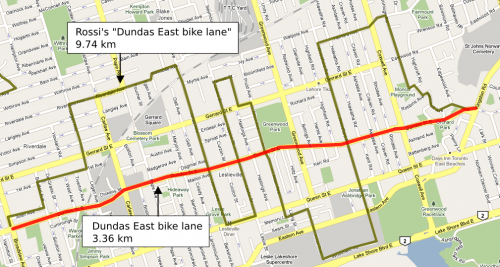The Ontario government should create a $20 million Ontario Bicycling Investment Fund with the extra money that will be collected through the new HST. This is one of the recommendations found in the Green Paper (pdf) released by the Share the Road Cycling Coalition last Friday.
Currently bicycles and bike safety equipment are PST exempt, but this will change with the new HST when the province starts collecting it in July.
Ontario is falling behind other jurisdictions when it comes to cycling policy. Both BC and Quebec have policies and funding to encourage cycling. Even the US has a federal fund to allow municipalities to invest in cycling infrastructure. We need to incorporate cycling into provincial transportation policy: says Eleanor McMahon, founder and CEO of Share the Road Cycling Coalition.
The bike fund would represent a fraction of the investment by the Quebec government into La Route Verte ($200 million), which brings in $38 million in government revenue through tourist dollars spent.
The Green Paper was developed by the Coalition in consultation with partners across Ontario, and further to the Coalition’s 2009 Ontario Bike Summit, a gathering of cycling experts, municipal leaders and international speakers. Best practices in cycling design, policies and initiatives were shared with a view to building capacity, developing best practices and learning from other colleagues and jurisdictions who have embraced cycling as a mainstream mode of transportation and recreation.
“Our provincial government, unlike other provinces such as British Columbia and Quebec does not currently play a direct role in creating policies and funding infrastructure, education and awareness initiatives to encourage bicycling. Our data and research, based on polling and surveys done in communities across Ontario, confirms what we heard at the 2009 Ontario Bike Summit. Communities across Ontario want the province to play a direct role in funding initiatives which will make Ontario a bicycle-friendly province,” McMahon said.
Share the Road was created in memory of OPP Sergeant Greg Stobbart killed in a cycling collision in June 2006. Stobbart was the husband of Eleanor McMahon.

